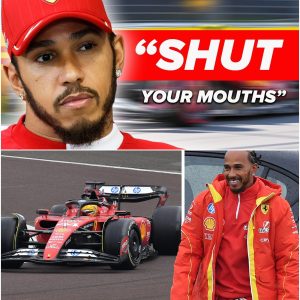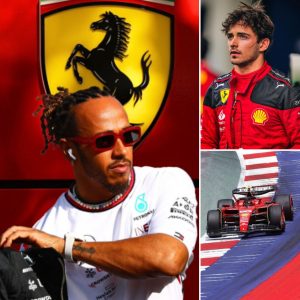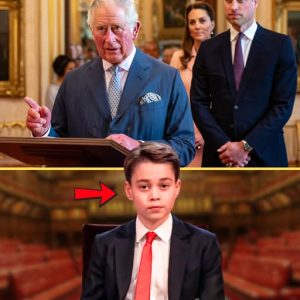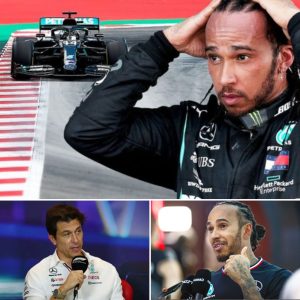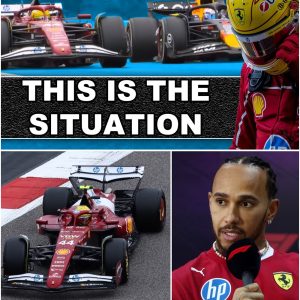Formula 1 never slows down—not on track and certainly not in the news cycle. With the summer break behind us, tensions are running high across the paddock.
From George Russell’s sharp words about his former teammate Lewis Hamilton, to Red Bull’s ongoing driver dilemma, to whispers about Cadillac’s entry strategy, the 2025 season is already being shaped before the current campaign concludes. Add in the constant debate over sprint races and experimental formats, and fans are left with no shortage of storylines.
This article dives into the latest twists: what Russell really meant about Mercedes and Hamilton’s departure, how Red Bull’s future could hinge on internal politics, why Hamilton’s Ferrari frustrations are more than just emotional outbursts, and whether F1’s sprint experiment has lost its way.

Russell vs. Hamilton: A Shift in the Mercedes Dynamic
When Lewis Hamilton shocked the sport by announcing his move to Ferrari for 2025, Mercedes were forced into a period of reflection. George Russell, who has been Hamilton’s teammate since 2022, offered his candid assessment in an interview with Autosport.
Russell framed Hamilton’s departure as a win-win for all sides:
For Hamilton: A chance to leave Mercedes’ stagnation behind and influence Ferrari’s direction.
For Mercedes: An opportunity to “break the mold” and reset development strategies without the weight of Hamilton’s expectations.
For himself: A clear path to becoming team leader after three years of fighting for parity with a seven-time world champion.
“It’s good for him, it’s really good for us as a team,” Russell said, describing Mercedes’ refreshed energy since Hamilton’s exit was confirmed. He highlighted that sometimes “you need to break the mold to find yourself back on track.”
The numbers show just how fine the margins were during their partnership. Across three seasons, Hamilton scored 697 points to Russell’s 695—an astonishing near-deadlock. While Hamilton’s experience still gave him the edge in 2023, Russell’s competitiveness made Mercedes one of the most balanced driver pairings in F1.
Now, however, Russell has the undisputed mantle of leadership. With teenage prodigy Andrea Kimi Antonelli still finding his feet, Russell has the breathing room to influence Mercedes’ car development and culture in ways that weren’t possible alongside Hamilton.
But whether this fresh start truly benefits Mercedes remains to be seen. Their 2025 challenger has yet to deliver consistent performance, and many of the team’s recent upgrades have fallen flat. If Russell’s optimism is correct, results will need to start proving it sooner rather than later.
Hamilton’s Ferrari Frustrations: A Hidden Message?
Meanwhile, Hamilton has been making headlines for less flattering reasons. After a disappointing Hungarian Grand Prix, the Briton told reporters: “Every time, I’m useless. Absolutely useless. Maybe they need to change the driver.”
At face value, it sounded like self-criticism. But former F1 star Juan Pablo Montoya believes there was a deeper message aimed squarely at Ferrari. Montoya suggested Hamilton’s words were really about the Scuderia’s reluctance to heed his advice. By saying “the team has no problem, the car is on pole,” Hamilton may have been indirectly warning Ferrari that results are misleading—that Charles Leclerc’s strong performance doesn’t mask underlying issues.
Ferrari’s culture has long been characterized by politics and tradition, something Hamilton is not accustomed to after years at Mercedes, where pragmatism and performance have driven decision-making. Montoya speculates Hamilton’s comments were a subtle ultimatum: change your ways, or risk wasting my talents.
Whether or not that interpretation is correct, Hamilton’s transition has clearly been rocky. Adjusting to Ferrari’s methods may take longer than expected, and Hamilton’s patience will be tested as he seeks to influence the team without alienating its hierarchy.

Red Bull’s Driver Market Chess Game
Elsewhere, Red Bull face a headache of their own: who partners Max Verstappen in 2025?
Yuki Tsunoda: Backed heavily by Honda, Tsunoda remains the favorite, especially with Japanese manufacturers pushing for representation as the Suzuka Grand Prix grows in prominence.
Liam Lawson: Once considered a rising star, Lawson’s prospects appear dim. Reports suggest he was handed an experimental setup in China that compromised his performance and justified his demotion. Lawson has since spoken openly about his frustration, but insiders claim his chance of a Red Bull seat alongside Verstappen is effectively “0%.”
Isaac Hajar: The French rookie is now viewed as a strong contender. Red Bull may prefer to test him at the highest level rather than revisit Lawson.
The situation reflects a shift in Red Bull’s internal politics since Christian Horner’s departure. The team is no longer the ruthless conveyor belt of drivers it once was under Helmut Marko. Instead, there’s more patience—but also uncertainty.
Interestingly, some analysts suggest Racing Bulls (formerly AlphaTauri) have occasionally fielded a faster car than Red Bull’s RB21 this season. Lawson even out-qualified Verstappen in Hungary, sparking debate about whether Red Bull could learn from its sister team’s setups.
For now, though, the pecking order is clear: Verstappen is untouchable, Tsunoda holds Honda’s backing, and Hajar may leapfrog Lawson into F1’s most coveted second seat.
The Sprint Race Debate: Chaos or Compromise?
While teams grapple with driver futures, Formula 1 itself continues to wrestle with its format. Sprint races, introduced in 2021, remain divisive. Now, discussions about reverse grids have reignited controversy.
A recent fan poll revealed overwhelming opposition to reverse grids in sprint races. Roughly 75% of voters preferred the traditional Grand Prix weekend format, while a minority of sprint fans favored “full chaos” with completely inverted starting orders.
The divide highlights a fundamental identity crisis for F1: should sprints exist at all? Traditionalists argue the sport doesn’t need gimmicks, while entertainment-driven advocates say sprints should embrace unpredictability if they are to stand apart.
Max Verstappen has been vocal in his criticism, warning that constant tinkering risks undermining the sport’s integrity. For now, the current sprint format will remain, but the debate shows no sign of cooling down.
Cadillac, Pérez, and the Next Wave of Rumors
As if the established teams weren’t generating enough storylines, new entrants are stirring speculation. Cadillac, set to join F1 with Andretti Global, is reportedly eyeing a driver pairing of Sergio Pérez and Valtteri Bottas.
The intrigue doesn’t stop there. Rumors also link former Red Bull boss Christian Horner—now officially free of his Red Bull contracts—to a potential leadership role in the Cadillac program. While still speculative, the idea of Horner rebuilding a new outfit from scratch has sparked excitement among fans and fear among rivals.
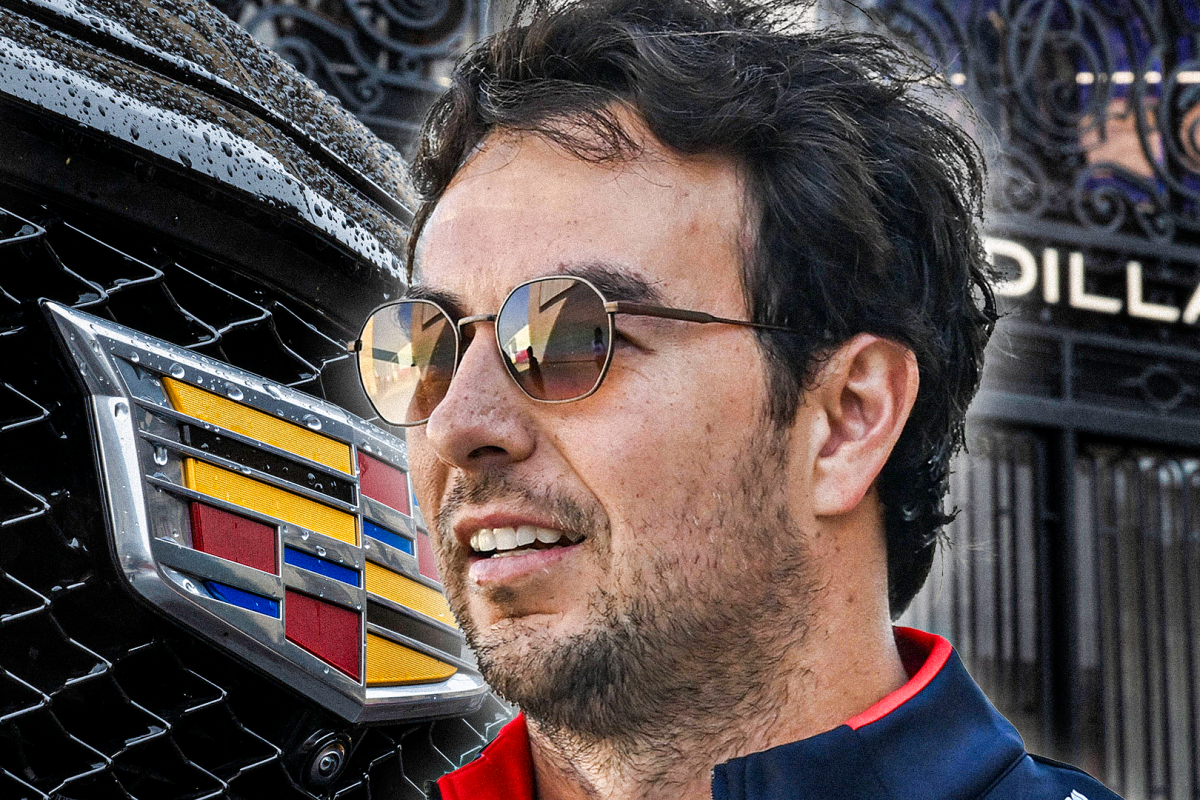
The Bigger Picture: F1’s Unfinished Storylines
From Mercedes’ leadership shake-up to Ferrari’s internal politics, from Red Bull’s driver market saga to Cadillac’s ambitions, Formula 1 is in a state of flux. Beneath the headlines, several themes connect these storylines:
Transitions of Power: Hamilton leaving Mercedes gave Russell authority; Horner leaving Red Bull may open the door for new structures.
Politics vs. Performance: Ferrari’s culture clash with Hamilton mirrors Honda’s push to secure Tsunoda’s seat at Red Bull.
Entertainment vs. Purity: The sprint race debate underscores F1’s ongoing struggle between spectacle and tradition.
As the 2025 grid takes shape, the drama off the track is nearly as gripping as the battles on it. One certainty remains: in Formula 1, no storyline ever truly reaches the chequered flag—there’s always another lap to be run.
